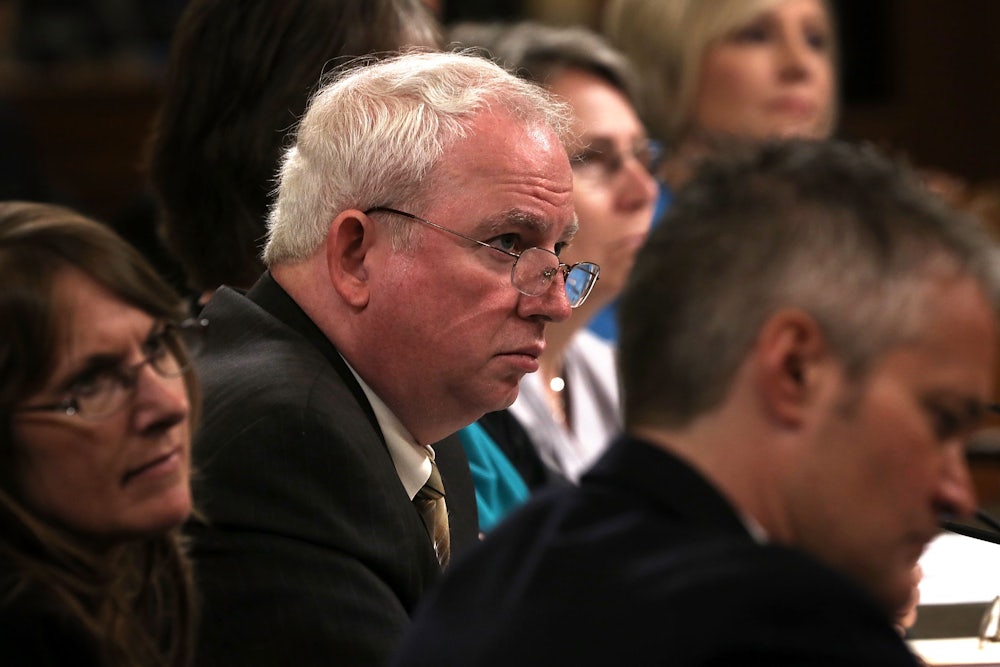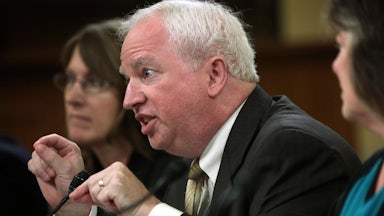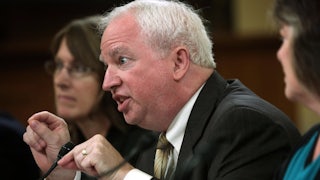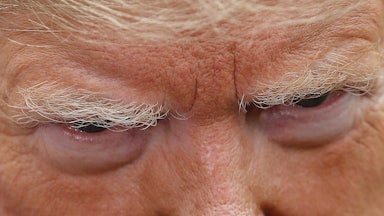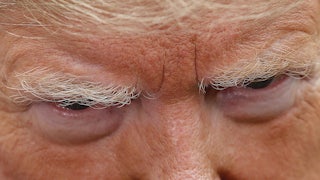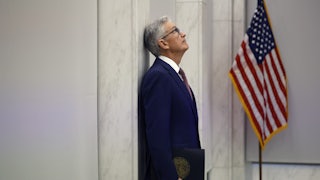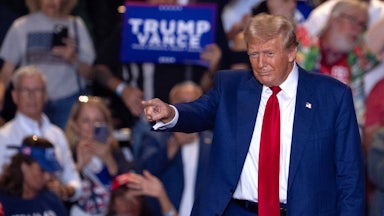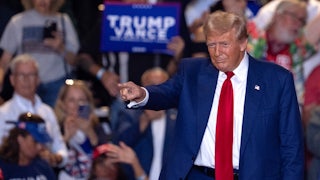The Claremont Institute, a conservative think tank known for its pro-Trump leanings, is in damage-control mode after a massive public backlash against John Eastman, a lawyer who works for one of its divisions. In recent months, Eastman has become infamous as journalists have surfaced and reported on memos he wrote while advising former President Donald Trump and former Vice President Mike Pence about the 2020 election and the transfer of power. In both memos, Eastman laid out a series of quasi-legal paths for Trump to retain power and have a second term, despite losing the election.
Since the contents of these memos became public, Eastman has lost some of his prominence in the conservative legal world. The Federalist Society quietly removed him as chair of its federalism and separation of powers practice group. The American Political Science Association dropped Claremont from its annual conference later this year. I don’t blame Claremont for its frustration over bearing the consequences of having a prominent faculty member try to find a semilegal basis for an attempted coup. But the organization’s claims that Eastman—poor, defenseless Eastman!—is the real victim here defy any sense of reality.
Claremont’s forthright defense of Eastman came in the form of a statement on its website earlier this week, written by Thomas Klingenstein and Ryan P. Williams, who are respectively the organization’s chairman and its president. The two men claimed that Eastman “offered legal advice that has since been maliciously misrepresented and distorted by major media outlets” and that, as a result of this “disinformation campaign,” some professional groups have “imposed a blackout on the Claremont Institute or on John, making it very difficult to present the truth.”
We’ll start at the beginning. In what way has Eastman’s legal advice been “maliciously misrepresented” or “distorted by major media outlets?” In the interest of absolute clarity and open debate, I’ll quote the entirety of the meat of their argument:
1) Contrary to almost universally false news accounts, which have done great damage, John did not ask the Vice President, who was presiding over the Joint Session of Congress where electoral votes were to be counted on January 6, to “overturn” the election or to decide the validity of electoral votes. John advised the Vice President to accede to requests from state legislators to pause the proceedings of the Joint Session of Congress for 7 to 10 days, to give time to the state legislatures to assess whether the acknowledged illegal conduct by their state election officials had affected the results of the election.
2) If the state legislatures had found sufficient illegal conduct to have altered the results, and as a result submitted a second slate of electors, John advised the Vice President that, despite credible legal arguments to the contrary, the Vice President should regard Congress, not the Vice President, as having the authority to choose between the two slates.
The central claim here is the most important one: that Eastman “did not ask the Vice President … to ‘overturn’ the election or to decide the validity of electoral votes.” To my knowledge, no major news outlet or commentator has claimed that Eastman “asked” Pence to do anything. A quick Google search of “Eastman asked Pence” and “Eastman asked the vice president” turned up nothing salient. And, for what it’s worth, I personally didn’t claim that Eastman had made any requests of Pence when I wrote about his memo last month. In other words, Claremont focuses its efforts on debunking an accusation that, as far as I can tell, no one has actually made.
Why did it rest its defense of Eastman on this fallacious foundation? I am not telepathic, so I cannot say for certain why Klingenstein and Williams took this approach. Perhaps they were misinformed about the nature of the criticism that Eastman had faced. Maybe they came across some criticism of him that I have missed. (They did not provide a citation for any of the “almost universally false news accounts” in their post.) What I can say, generally speaking, is that it is far easier to debunk a nonexistent allegation about Eastman than the real ones that his critics have leveled.
In the spirit of exploration, let’s replace “ask” with another verb. Did Eastman “advise” that Pence could overturn the election or decide the validity of electoral votes? His original two-page memo points toward “yes” on both counts. In it, Eastman theorized that Pence could break from the procedures laid down in the Electoral Count Act of 1887, skip certain Biden-won states until the others were counted, and then announce that because of “disputes” in those states, “there are no electors that can be deemed validly appointed in those States.” Had Pence done so, the math would have tilted in Trump’s favor. “There are at this point 232 votes for Trump, 222 votes for Biden,” Eastman wrote. “Pence then gavels President Trump as re-elected.” In this scenario, Pence would have both decided the validity of electoral votes and, in doing so, overturned an election that Biden won in favor of Trump and himself.
Now, according to Eastman, he didn’t actually make this argument to Pence directly during a pivotal early-January Oval Office meeting with himself, Pence, and Trump. The New York Times reported that Eastman said he “told Pence that he might have the power, but that it would be foolish for him to exercise it until state legislatures certified a new set of electors for Trump—something that had not happened.” Assuming that that’s true, however, Eastman still advised the Trump campaign in the two-page memo that Pence could take unilateral action. Since Pence was Trump’s running mate at the time and part of the Trump campaign, there’s a strong case to be made that it counts as advising Pence in a roundabout way. But at that point we’re engaging in the sort of hypertechnical hair-splitting that Eastman and the Claremont Institute apparently enjoy.
Complicating Claremont’s defense is that Eastman has spoken up for himself on one of its other websites. In his version of events, Eastman simply discussed abstract legal hypotheticals with the Trump campaign in case there was evidence of illegal election conduct. “Each of the scenarios I presented was grounded in constitutional text and supported by scholarly writings or prior judicial precedent,” he claimed. “They were presented to serve as the basis of a full discussion of all the options available to our elected leaders, premised on the assumption of proven electoral fraud or illegality.”
The first sign that Eastman is not being fully forthright here is that he flits back and forth on whether any illegal conduct actually happened. “The memo’s proposals aimed to prevent certification of a potentially illegal election—and this is what the hounds call ‘overturning the election’ and urging a ‘coup,’” Eastman claimed. He’s just speculating, folks! But an “illegal election” does not sound so “potential” just a few sentences earlier when he complains about election-law disputes between the Trump campaign and various state officials. “These illegalities, without question, took place,” he asserted. No state or federal judge has agreed.
Why does the distinction matter? Because Eastman wants to cast his role in the lead-up to January 6 as an academic exercise on the nature of the Twelfth Amendment and the practicalities of the Electoral Count Act of 1887 instead of something closer to reality: He played a part in a plot to disrupt the orderly transfer of American power on dubious legal and factual grounds. Indeed, in the longer second memo he drafted for the Trump campaign, Eastman is even more unequivocal that something nefarious had happened and that drastic action should be taken.
“I have outlined the likely results of each of the above scenarios, but I should also point out that we are facing a constitutional crisis much bigger than the winner of this particular election,” Eastman wrote. “If the illegality and fraud that demonstrably occurred here is allowed to stand—and the Supreme Court has signaled unmistakably that it will not do anything about it—then the sovereign people no longer control the direction of their government, and we will have ceased to be a self-governing people. The stakes could not be higher.”
This is the moral equivalent of a schoolyard bully telling you to stop hitting yourself. There is no evidence of any serious or significant fraud in the 2020 presidential election, let alone enough to taint the outcome. Eastman’s entire argument was premised on a lie spread by Trump to deny his defeat and hold on to power regardless of what the voters wanted. In baselessly arguing that Americans “will have ceased to be a self-governing people” if Trump did not retain office, he pushed the country closer to that very outcome. If Eastman were just shooting the breeze during lunch with his colleagues in the Claremont Institute break room, that would be one thing. But in reality, he was providing a reckless president with a quasi-constitutional road map to wreck American democracy.
It’s understandable that Eastman might be frustrated that he no longer enjoys the platforms and positions that he once did. Perhaps, standing from that vantage point, he could spare a thought for the millions of Americans whose disenfranchisement he proposed so a debt-saddled landlord could spend four more years live-tweeting Fox News every morning in the White House. And if Claremont is so committed to the truth and the free exchange of differing views, maybe it should double-check to see if it accurately described his critics’ claims before leaping so eagerly to Eastman’s defense.
